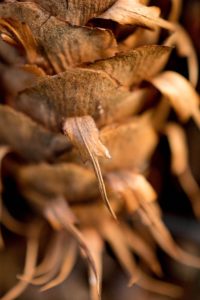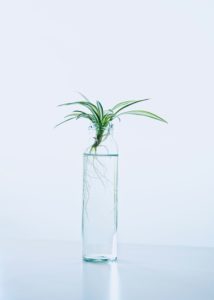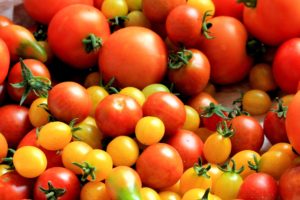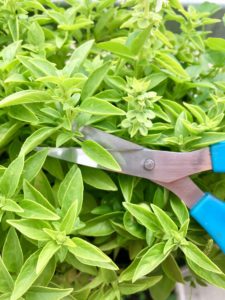Water quality in hydroponics is one of the most important aspect of any system. The basic principle that separates hydroponics from other forms of agriculture is that plants are grown in water, without soil. Plants grown hydroponically cannot take in nutrients from soil. As a result, water is the delivery guy for all the nutrients plants need. Grow media does help retain some nutrients, but water is what gets them there in the first place. Unfortunately, not any water delivers nutrients with the same efficiency. Poor water quality can kill plants and make it impossible for nutrient uptake in plants. Clean, well balanced water ensures plants get the most out of the nutrients you give them.
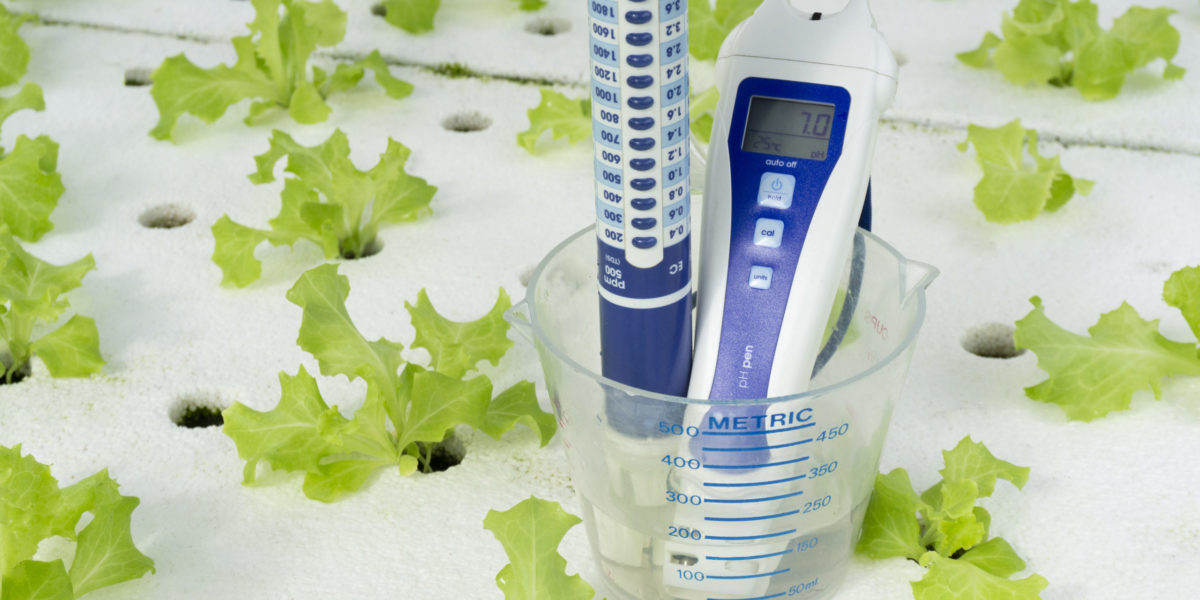
Managing Hydroponic Water Quality
How can you manage water quality in hydroponics? It takes time, testing, and patience. Test your water frequently, do regular water changes, and watch out for common problems. Water quality is an ongoing project. There is no weekly or bi-weekly schedule to simplify things. When there is a problem, correct it as soon as possible to keep your plants healthy.
The main problems with hydroponic water include:
- pH too high or low
- Not enough oxygen
- Nutrient solution too hot or cold
- Low or high EC
- Contaminants
- Stagnant, old water
Many hydroponic systems circulate water, providing aeration to the nutrient solution. Oxygen issues are more likely to occur in DWC systems, if an airstone is not added. pH is not the easiest thing to manage, but with careful monitoring, and a pH up or down solution, it is not too hard. EC can be more difficult since it is a measure of the concentration of nutrient salts in your water. Each plant has a target range, much like pH. But, as water evaporates, EC rises, since more salts stay in the water. Heaters and chillers change the temperature of liquids to a specified range. If you have trouble controlling temperatures in your grow area, one of these makes it much easier.
Contaminants are always present in tap water. Of course, some of the things in tap water are elements your plants actually need. The problem occurs when you are adding nutrient solution that also contains those same elements. Over time, the minerals from tap water accumulate in the reservoir. In the end, you have a much larger ratio of those micronutrients than you actually need. If you want to be precise, use a reverse osmosis (RO) filtration system. They are the most effective way to ensure you have a ‘clean slate’ when you add nutrients to your hydroponic reservoir.
Minerals in tap water, like calcium and magnesium, also contribute to the total hardness of your water. Some plants will thrive in hard water, while others simply cannot take it.
In theory, stagnant water should not be an issue in a hydroponic system. Of course, in theory, you are also completing regular water changes and cleaning your system. In the case of non-circulating systems, like Deep Water Culture, you can get stagnant water if you do not provide proper aeration.
Ways to measure water quality
Testing EC, pH, and TDS are the most common ways to measure hydroponic water. For home or hobby growers, these are usually all that is needed. For serious growers and commercial operations, more advanced monitoring comes into play. So, how can you measure hydroponic water quality? Take a look at some of these ways:
pH
pH, or potential hydrogen, measures the acidity or alkalinity of the medium. The easiest, and most inexpensive (at least, initially) way of measuring pH is with test strips. You dip the test strip into the water for a few seconds. Then, after 30 seconds or so, the strip changes color. The color of the strip corresponds to a color on a pH chart, which comes with the test strips. Whichever color the strip matches on the chart gives you an idea of the pH in your water. Digital pH meters cost more upfront, but provide more reliable results, and can be reused for years.
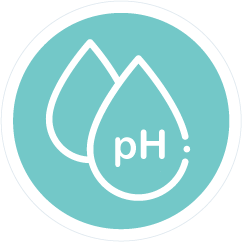
EC
EC, or electrical conductivity, measures the density of salts in hydroponic water. Plants have a ‘target’ EC, which tells you how much nutrients you need in your solution. If EC falls, it means
you need to add more nutrients. The best way to measure EC is with a digital meter. EC results are most commonly shown as mS/cm, or milli Siemens per centimeter.

TDS
TDS, or Total Dissolved Solids, measures the items within a solution, much like EC does. The difference is that EC measures ions that release when salts dissolve in water. TDS measures any solid dissolved within a liquid. Where EC shows measurements in mS/cm, TDS shows measurements in PPM, or parts per million. TDS may also be measured using a digital meter.
For more detailed explanations, see this guide
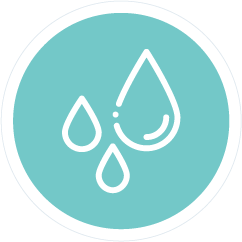
Fixing Water Quality
If you have water quality issues in your hydroponic system, fix them as quickly as possible. A little problem turns into a large one in very little time. One of the most urgent issues is a lack of oxygen in the water. Unless other parameters go well outside acceptable ranges, a lack of oxygen kills plants faster.
What can you do when you have issues with hydroponic water?
It is not as simple as just putting different water in your tank. Each problem with hydroponic water is different, and each needs a different fix.
pH problems
pH is certainly one of the most recognized measurements in hydroponics. That said, just because you know it is important and how to test does not mean you will not have problems. A lot of people overlook the fact that not all grow media is pH neutral. For instance, rockwool has a high pH, which can leach into your system. Try and neutralize (or close to) the pH of the grow medium in your system. Bacteria and algae also sometimes cause a pH imbalance, so keep your system clean.
Aside from doing regular water changes, there are pretty quick fixes for pH problems. The easiest ways are using pH adjusters, like pH Up or pH Down products. Whether you choose liquid or powdered products does not really matter. The most important part about using a pH adjuster is just following directions. And follow them very carefully because they are highly concentrated.
Always measure pH again after you use a pH adjuster.
We recommend the General Hydroponics pH Up and Down solutions
EC too high or low
EC measures nutrient concentration, so fixing it is easy if it is too low. Add more nutrients, and your EC rises. That is pretty simple, and in fact, it should be part of your regular hydroponic plant care. Do not add extra nutrients if your EC is in the ideal range. Adding nutrients when you do not need them is one way to cause a problem.
So, what if the EC in your hydroponic water is too high?
Depending on the severity, you need to take different measures to fix it. If your EC is only a little too high, do not worry. Just do a partial water change, and check EC again. Then, rinse and repeat (if needed). Every time you change water, measure the EC so you know when you are in the ideal range.
But what if your EC is way too high?
Again, if it is really horrible, take more drastic measures. Instead of a small water change (say, a few gallons), change 50% of your water. That means draining half of the nutrient solution in your hydroponic reservoir and adding new water. Do not put any nutrients in the new water. Then, test your EC. By now, it should be evened out to acceptable levels. If it is not, repeat draining and refilling your reservoir.
And next time, keep an eye on water changes and the nutrients you add.
Poor aeration
Most of the time, plants are the major indicator there’s not enough oxygen in their water. They begin by drooping and showing sick roots. If it is not fixed, the plants eventually die. Certain hydroponic systems (in fact, the majority of them), circulate water. NFT systems have a constant flow of water. Roots are partially submerged, but still get plenty of exposure to take in oxygen. Ebb and flow systems flood periodically, and drain moisture to allow oxygen in.
In DWC systems, this is not the case. Roots sit, submerged in water. Even if you do regular water changes, that is not enough oxygen for a healthy root system. If your system does not circulate nutrient solution, use an airstone combined with an air pump to oxygenate the water.
If you use an airstone, but it does not seem like enough, add another. First, make sure you have put your airstone where bubbles float up to all the plants. Airstones should not be in one corner where they only help part of the tank.
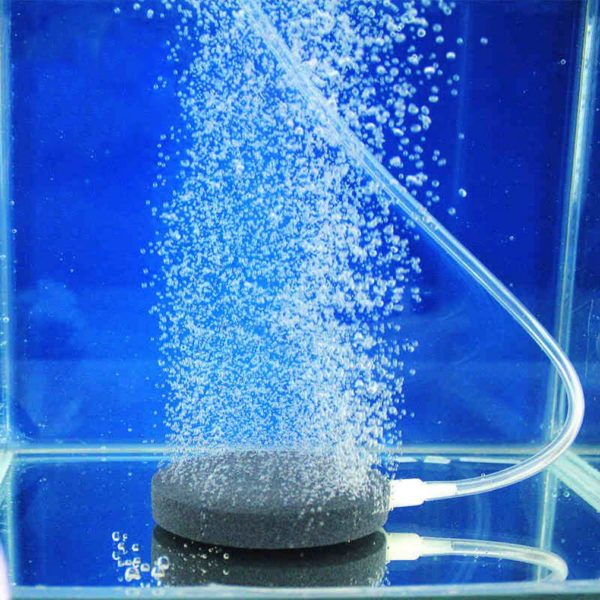
Hydroponic water temperature
Root zones need certain temperatures to take in nutrients and stay healthy. In hydroponics, soil does not act as an insulator. Which means the temperature of the nutrient solution is important. Ideally, nutrient solution should be between 60 and 75 degrees. Considering the lights and heat of your grow room, you may need to cool or warm your nutrient solution.
Most people quickly realize that nutrient solution getting hot (from warm lights) is more to contend with than cold solution. While you can buy a special device, called a ‘chiller’, for nutrient solution, you can use other, more affordable solutions. Try keeping your reservoir farther from your plants and insulate it. Both of these can make a big difference, especially when you increase ventilation.
If you struggle with cold nutrient solution, a heater is more affordable than a chiller. That said, you can also place your reservoir a little closer to your plants (if you have warm lights). Be careful though, because too much heat is not good either.
Contaminants
Contaminants come from outside sources, like dust floating around your grow room. But they also come from less obvious places, like your tap water. Tap water is treated and cleaned, but there’s still additives and chemicals left behind. While people rarely even notice it, it can throw off a plant’s balance.
While excess minerals can build and stress out plants or cause other health issues, they can also throw off your nutrients. If you look at a nutrient mix, most specify that you need to start with clean water. Ideally, you will start with water as close to 0 PPM as possible. If you try and test your tap water, it almost certainly will not read out anywhere near 0 parts per million. That means there are already some elements in the water, and you add even more when you put in nutrients.
Use purified water rated under 100 ppm whenever possible. Serious hydroponic gardeners and commercial growers often use a reverse osmosis (RO) system. Simply put, it is the best way to ensure you start with pure, uncontaminated water.
Short of using a reverse osmosis filter, you can also set out water to distill. It allows some chemicals in the water to evaporate (especially chlorine). While Reverse Osmosis may not be practical for hydroponic hobbyists, it can remove 95 to 99% of salts in water, according to the University of Massachusetts’ Center for Agriculture
Frequently Asked Questions
Can I use bottled water?
How much are you willing to spend? Using bottled water (specifically water purified through reverse osmosis) is not exactly budget friendly. Even with a small system that holds 5 or 10 gallons of water, the costs add up quickly. In fact, an RO system would be a better long term investment. Here is another problem: not all bottled water is RO purified. And a lot of it has added electrolytes for flavor. And never, ever, use mineral water or spring water for hydroponics.
Is a recirculating system bad for water quality?
Recirculating systems do not decrease water quality. Just as with ‘run to waste’ systems, you should add fresh water regularly. Provided the amount of nutrients stays the same, and the pH is in the ideal range, there is no large difference. However, if one plant is suffering from illness or another pathogen, it spreads to other plants more quickly. Basically, just keep an eye on your plants and remove or treat sick ones ASAP.
